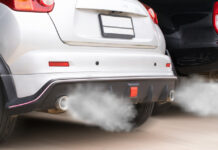Timing belts transfer the crankshaft’s movement to the camshafts, so the engine valves operate with the right timing to get maximum torque and power. It is an engine component that is crucial for engine performance.
Rubber is the main material used in making the timing belt. The rubber material used in the timing belt is heat-resistant. It can crack or become loose due to its natural nature.
If the timing belt fails, the valves can’t be driven and the timing of opening/closing the valves is disrupted. The engine will stop. In the meantime, when you try to start the engine without thinking, the timing belt can break. The valves will bend and hit the tops the pistons. This can cause damage to the pistons which can lead to costly engine overhauls.
This will prevent the timing belt from wearing out.
Some engines use a timing chain instead of a time belt. The timing chain doesn’t have a set change interval. However, it may experience some lengthening depending on how often it is used. The timing chain must not be extended beyond the tolerances set by the manufacturer. If the timing chain is not replaced, delays in valve timings will occur and engine performance may be affected.

















